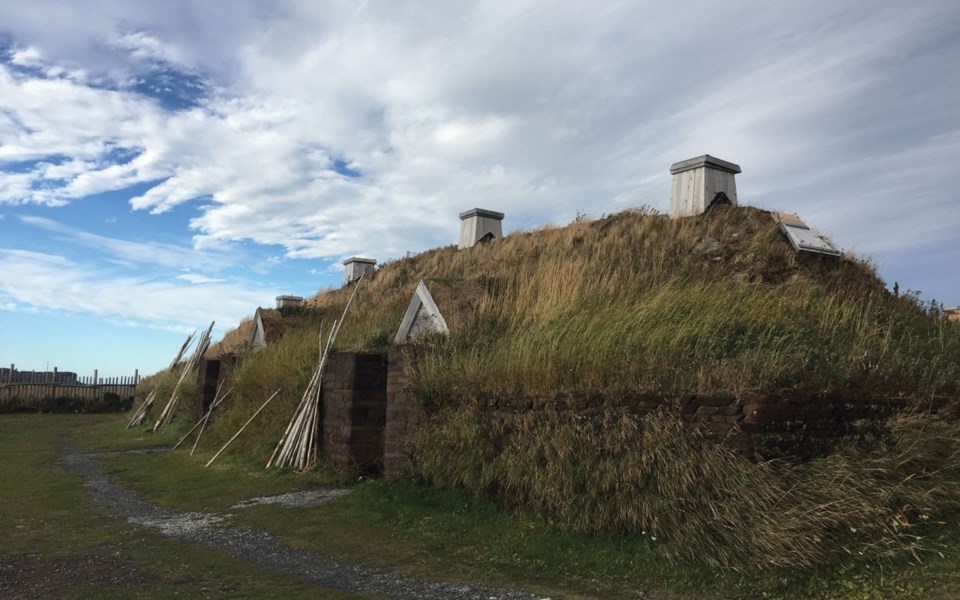One thing that strikes me about some mountain ranges is their singular character—how a constellation of geography, latitude, and geological and human history makes them so different. Last week, I had occasion to spend time in one with which I was familiar, having skied multiple times there but never visited outside of winter—the Long Range Mountains of western Newfoundland, northernmost extension of the ancient Appalachians.
I started where I always do, flying into Deer Lake, which services Newfoundland's second-largest city, Corner Brook. In winter it's as lonely a snow-swept outpost as you can imagine, but a surprising amount of infrastructure comes to life in summer to service the not insubstantial tourism to the north. Spending a few days on the great Northern Peninsula—of which the Long Range form the spine—allowed me to expand my wanderings in the area and learn more of its past, of which I knew scant bits.
For most Canadians, Newfoundland history begins with its entry into Confederation in 1949, but L'Anse aux Meadows at the remote tip of the Great Northern Peninsula is where the continent's first European footprints were laid down by Vikings around 1,000 AD. Thus, the aptly labelled Viking Trail—a.k.a. Route 430—running north from Deer Lake to St. Anthony. My explorations would follow it.
I found my most improbable stop before I'd even gone a kilometre—the Newfoundland Insectarium. Here, Lloyd Hollett, a former government entomologist, has created the most-loved indoor attraction in the province. The three-storey renovated dairy barn seems an improbable cross between a tiny zoo, a museum and a science centre. In addition to display cases of perfectly preserved specimens from around the world arranged geographically, there's live butterflies, an aquatic corner, a two-sided working beehive, and a busy leaf-cutter ant exhibit. Hollet's passion for bugs is as apparent as the oddity of its location, making it twice as charming.
Next stop, Gros Morne National Park, whose deformation geology is spectacular, seen in highway outcrops and hikes to the seashore where rocks have buckled and bent like putty. No surprise given the area's geologic history, which involved the opening of the Iapetus Ocean 550 mybp (million years before present), when material from the Earth's mantle was extruded to the surface. Not even the day's howling wind and rain can keep us from a bucket-list visit to postcard Western Brook Pond, a three-kilometre bog walk to a dock where tour boats tie up. It's miserable and wet atop the deck, albeit spectacular, with soaring 700-metre cliffs lining the sides of this inland freshwater fjord created by post-glacial isostatic rebound of the coast. On the return, Parks staff do what all Newfoundlanders seem to—play music and break out the spoons to keep people entertained.
North of Gros Morne, the road shadows the North Atlantic, with sub-Arctic forests of wind-sculpted bonsai spruce and twisted, oddly stunted birch; soon limestone erupts along the white-capped oceanside and we pull over to make a short hike to a unique formation. From 3.5 billion years to 610 million years ago, the only life on Earth comprised unicellular organisms, some of which formed symbiotic colonies. These "Thrombolites," which resemble giant buns or cushions, aren't fossils per se, but limestone-like traces of such life. Anything this old is interesting, but when it was once alive the cool-factor soars.
Crossing the peninsula's interior, bogs, rocks and ground-hugging vegetation dominate. Road signs featuring moose and crumpled cars tell yet another cautionary tale from the Anthropocene age. A century ago, moose were introduced here and fanned out across the island to occupy every corner. Despite an annual hunt that's now part of the province's cultural and tourism fabric, numbers keep increasing (over 100,000) and the environmental as well as human costs continue to mount. People injured in collisions with moose have even sued the government for negligence in failing to control them.
Finally, after 435 lonely kilometres, we reach L'Anse aux Meadows, a windswept expanse of high beach fronted by islands once used as navigational markers. A tour with Parks staff divulges the story of the Vikings' occupation as gleaned from the historic Norse Sagas. Leif Eriksson had set out from Greenland and found a "place of rock" identified as Baffin Island; he sailed further to discover "the wonder strands," long beaches on the Labrador Coast he named Markland. Geographically, L'Anse aux Meadows adds up to "Vinland," his next stop. The Norse were here 1,000 to 1,030 AD, with 60 to 90 people at the height of occupation.
As the sun sets, colour catches an arch of cloud that stretches across the sky from southwest to northeast. Following the Long Range Mountains and prevailing wind, it points in the direction the Norse came from. All I can hear is wind and waves as I think how this unheralded spot in Canada is where the two great migrations of humanity—east across Asia and into North America from Beringia, and west from Europe—first met.
The gravity of this is so sharp it's like being stabbed by time.
Leslie Anthony is a Whistler-based author, editor, biologist and bon vivant who has never met a mountain he didn't like.




